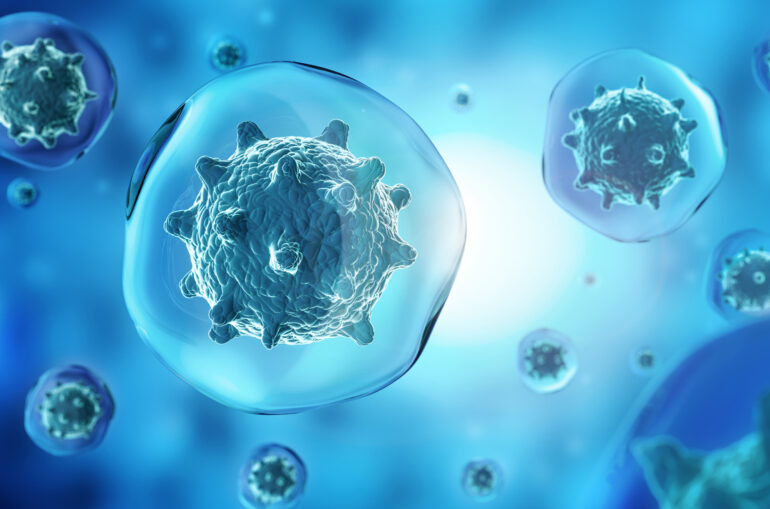Up to 50% of cancer-signaling proteins once believed to be immune to drug treatments due to a lack of targetable protein regions may actually be treatable, according to a new study from the Perelman School of Medicine at the University of Pennsylvania. The findings, published this month in Nature Communications, suggest there may be new opportunities to treat cancer with new or existing drugs.
Researchers, clinicians, and pharmacologists looking to identify new ways to treat medical conditions—from cancer to autoimmune diseases—often focus on protein pockets, areas within protein structures to which certain proteins or molecules can bind. While some pockets are easily identifiable within a protein structure, others are not. Those hidden pockets, referred to as cryptic pockets, can provide new opportunities for drugs to bind to. The more pockets scientists and clinicians have to target with drugs, the more opportunities they have to control disease.
The research team identified new pockets using a Penn-designed neural network, called PocketMiner, which is artificial intelligence that predicts where cryptic pockets are likely to form from a single protein structure and learns from itself. Using PocketMiner—which was trained on simulations run on the world’s largest super computer—researchers simulated single protein structures and successfully predicted the locations of cryptic pockets in 35 cancer-related protein structures in thousands of areas of the body. These once-hidden targets, now identified, open up new approaches for potentially treating existing cancer.
What’s more, while successfully predicting the cryptic pockets, the method scientists used in this study was much faster than previous simulation or machine-learning methods. The network allows researchers to nearly instantaneously decide if a protein is likely to have cryptic pockets before investing in more expensive simulations or experiments to pursue a predicted pocket further.
“More than half of human proteins are considered undruggable due to an apparent lack of binding proteins in the snapshots we have,” said Gregory R. Bowman, Ph.D., a professor of Biochemistry and Biophysics and Bioengineering at Penn and the lead author of the study. “This PocketMiner research and other research like it not only predict druggable pockets in critical protein structures related to cancer but suggest most human proteins likely have druggable pockets, too. It’s a finding that offers hope to those with currently untreatable diseases.”
At the end of the team’s experiments, the neural network identified probable cryptic pockets in 50% of protein structures tested that were previously thought to be “undruggable” and to contain no pockets. That can mean many cancers once thought untreatable with drugs could be treated effectively.
In their paper, the researchers highlighted two key protein structures, within cancer-signaling pathways, where cryptic pockets likely exist, which they say should be pursued when designing new drugs. The first, WNT2 protein in the Jak/Stat pathway is an integral part of cancer signaling in many solid tumors. The second is PIM2, a particular enzyme that is implicated as a driver of several types of cancer, including those of the lung, prostate, and breast as well as leukemia, and myeloma.
This kind of research is possible at Penn thanks to Folding@home, a distributed computing network managed by Bowman, where lay volunteers, with no computer or academic knowledge needed, allow their computer to be used to help conduct experiments and simulations. This leads to more data and faster calculations than any supercomputer could produce. Thanks to the distributed computing network and the PocketMiner neural network, the success rate and overall speed at identifying potential cryptic pockets was roughly a million-fold faster than other prediction methods used to find potential cryptic pockets.
“Folding@home and this study punctuate the importance of computers in biochemistry and biophysics. Computers are not going to replace the lab anytime soon,” said Bowman. “But by utilizing computers and innovative software and code first, researchers can conduct stronger research and make better hypotheses.”
More information:
Artur Meller et al, Predicting locations of cryptic pockets from single protein structures using the PocketMiner graph neural network, Nature Communications (2023). DOI: 10.1038/s41467-023-36699-3
Provided by
University of Pennsylvania
Citation:
More cancers may be treated with drugs than previously believed (2023, March 22)



